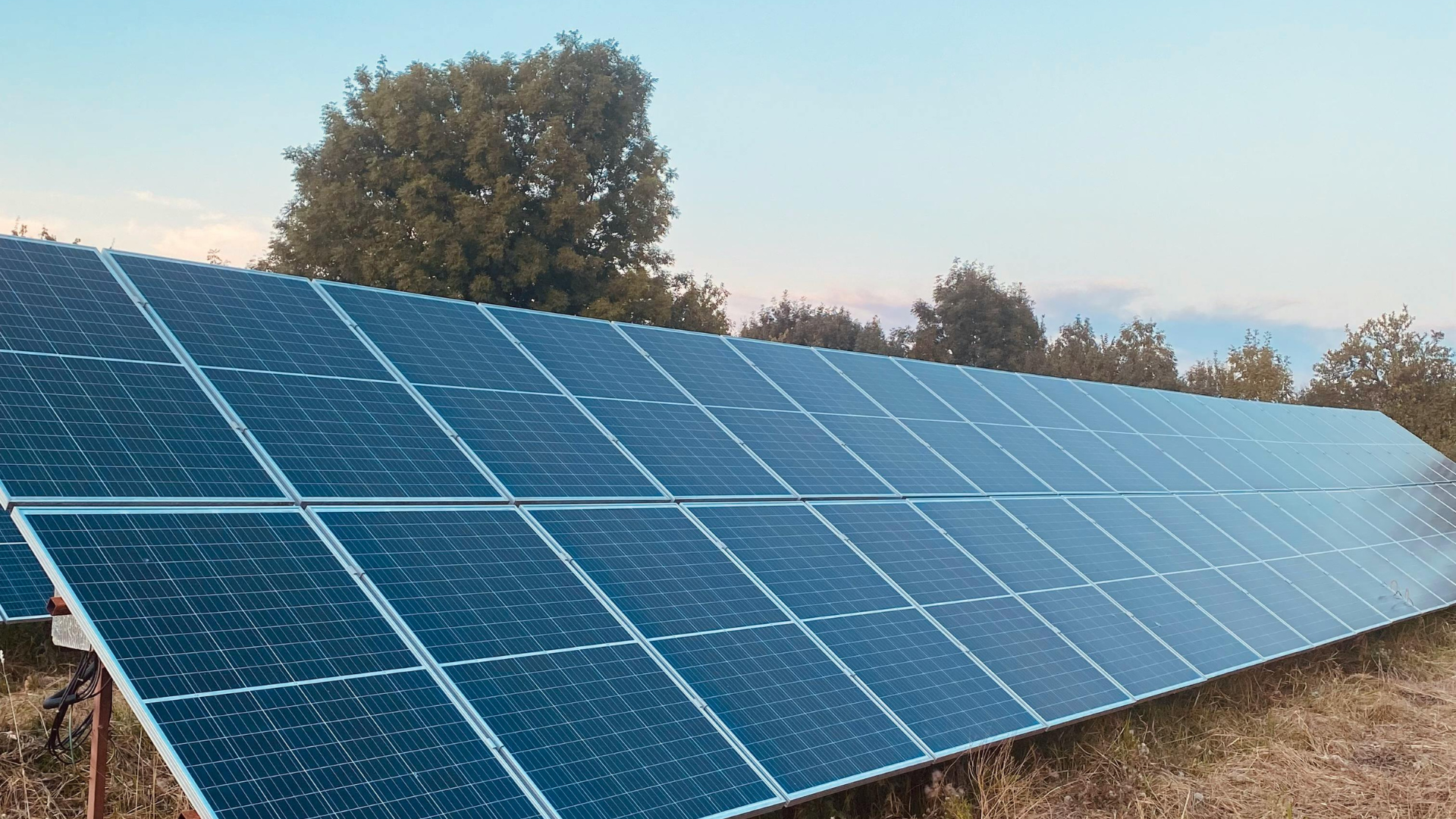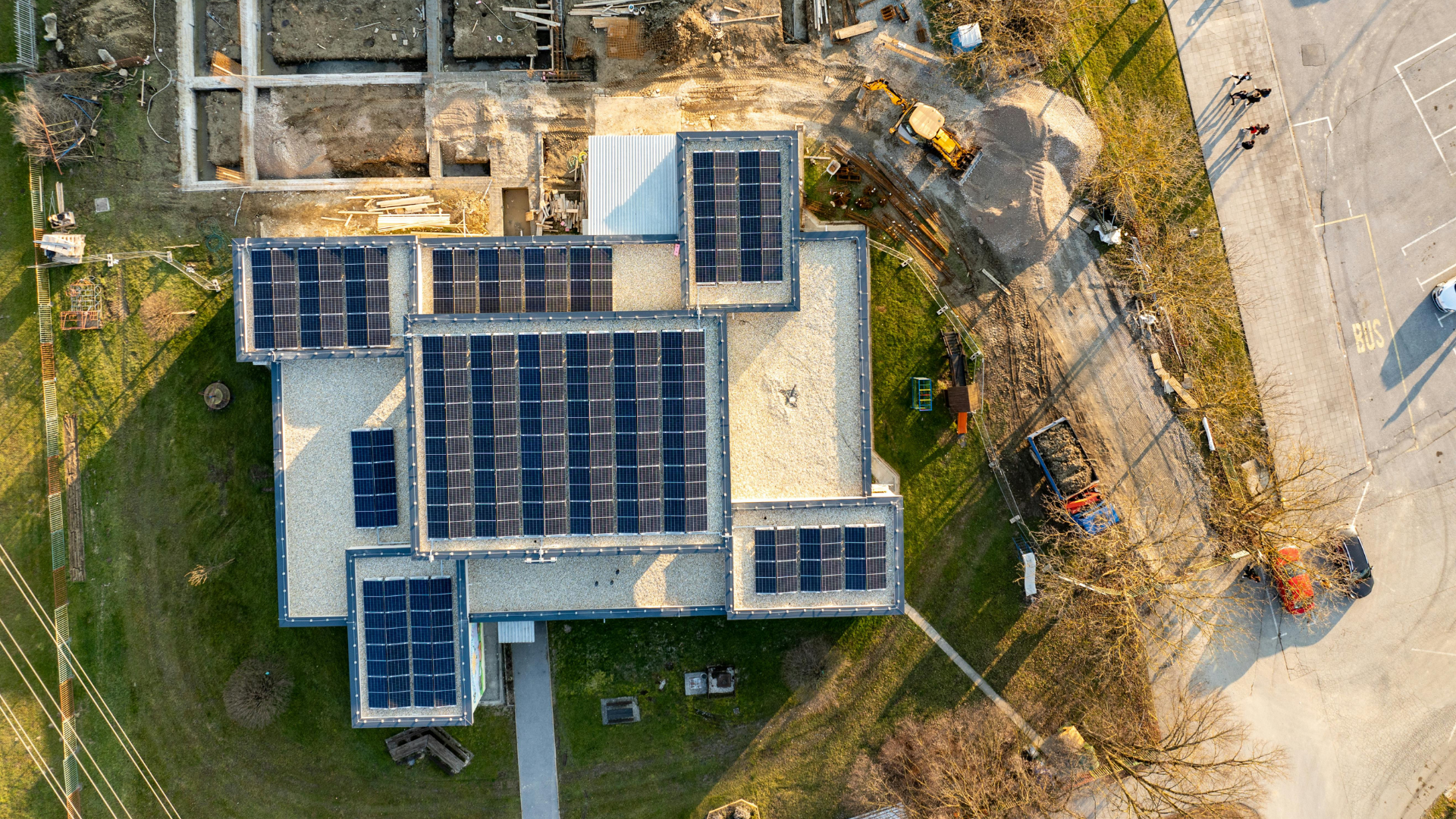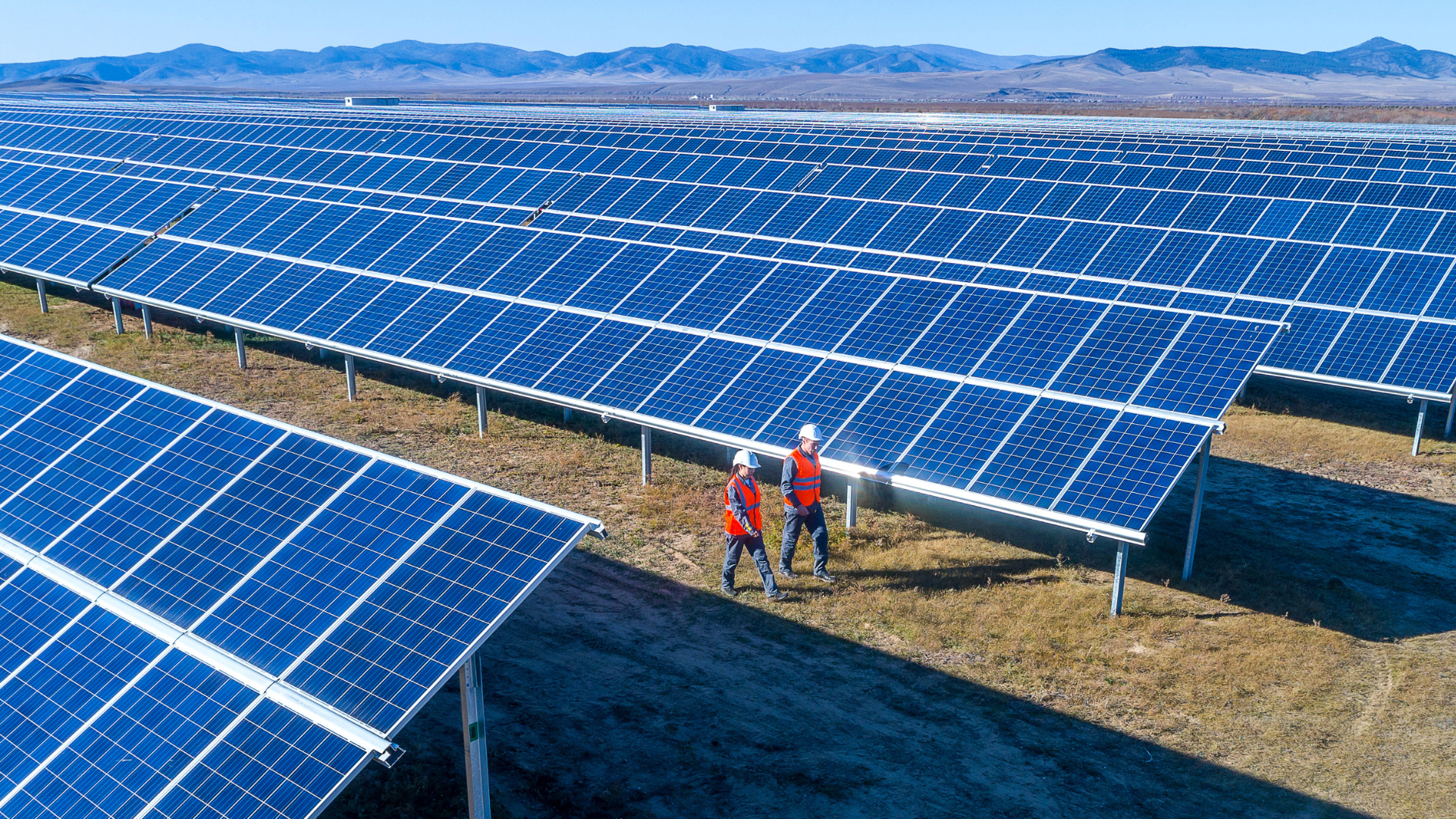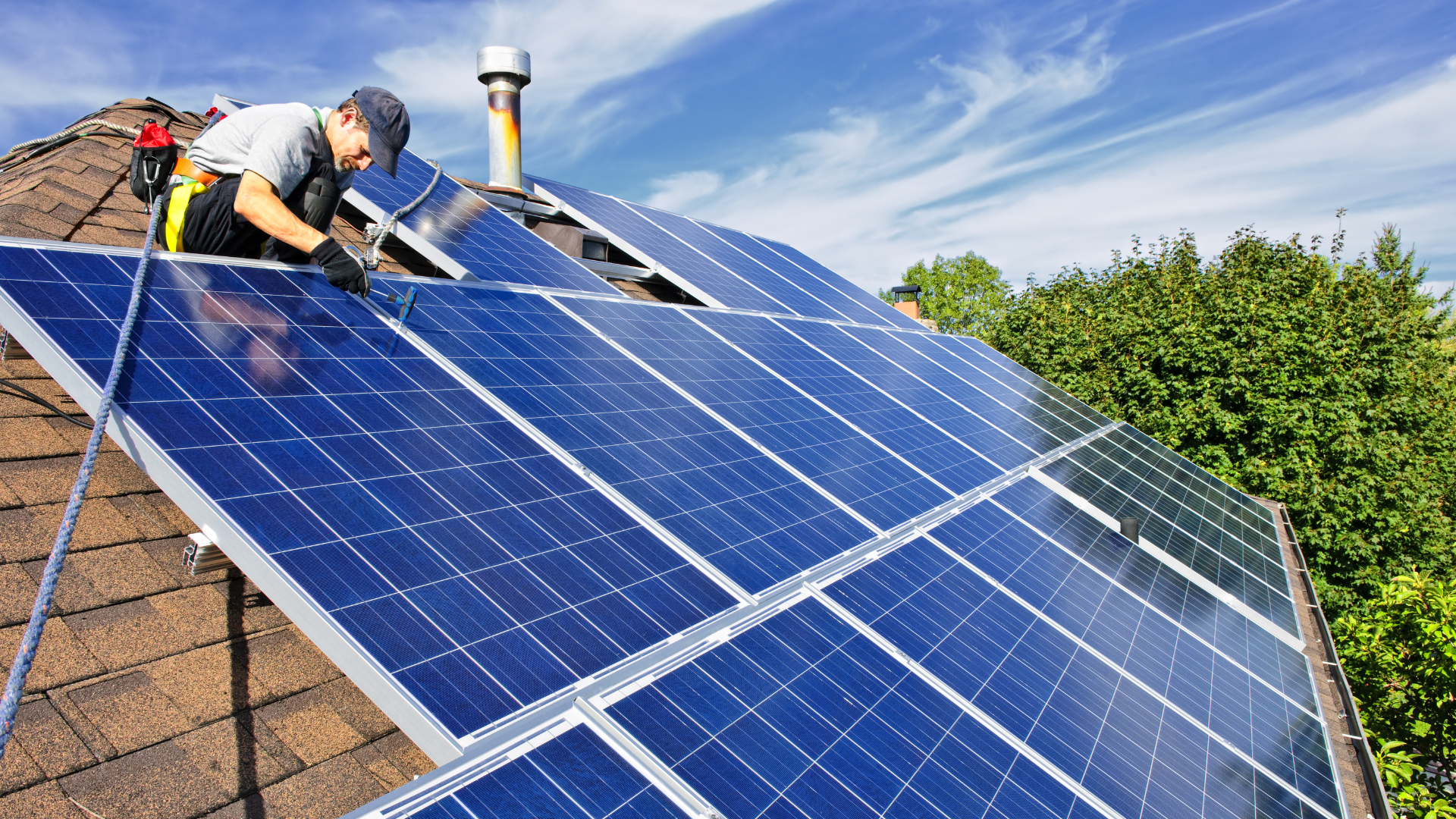November 4, 2025
Audio overview: Listen & Learn
What happens when the promise of affordable solar power collides with rising interest rates and shrinking incentives? In 2025, that’s the reality faced by homeowners, businesses, and solar companies alike.
Once seen as a smart investment with clear financial benefits, solar energy systems are now caught in a tighter squeeze, with higher solar financing costs, tougher credit standards, and the looming end of the 30% federal tax credit reshaping the market.
Globally, solar installations are growing, but in the U.S., momentum is slowing as solar loan rates, dealer fees, and incentive phase-outs increase the true cost of installing solar panels.
Customers are more cautious, scrutinizing every monthly payment, tax credit, and financing option before committing.
For solar companies, this shift means one thing: clarity matters more than ever. In this blog, we’ll explore how changing costs and incentives impact project pricing and why CRM-driven quoting is emerging as a survival tool in 2025.
Solar Financing Costs in 2025: What Rising Rates Mean for Homeowners and Businesses
In 2025, solar financing costs are reshaping how homeowners and businesses approach installing solar panels and investing in a solar energy system.
With higher interest rates, shrinking tax incentives like the federal tax credit, and rising dealer fees, the true total loan cost of a solar loan has increased.
From monthly payments and loan terms to financing options such as leases or PPAs, understanding these shifts is essential to unlock long-term solar savings and make a smart investment in clean energy.
Key Takeaways
- Rising solar financing costs and shrinking tax incentives are reshaping the true cost of solar panel installation in 2025.
- Homeowners and businesses now demand clear ROI models, transparent monthly payments, and flexible financing options.
- Policy uncertainty and fluctuating solar loan rates are slowing adoption, making trust and clarity essential for solar companies.
- CRM-driven tools like Sunbase give installers the edge with real-time quoting, incentive modeling, and faster deal closures.
Industry Overview: The State of Solar in 2025
The global solar market is thriving, and installations are projected to hit 655 GW in 2025, up 10% from last year (SolarPower Europe). Yet in the U.S., the momentum feels shakier.
According to SEIA, annual installations may actually decline by 2% between 2025 and 2030, raising concerns about the long-term outlook. For many homeowners, the dream of a home solar system now comes with higher upfront costs, longer payback periods, and shrinking tax incentives.
While global solar companies push forward with aggressive expansion, the U.S. residential sector, once a growth engine, is being slowed by rising interest rates and changing financing options.
Many homeowners who once expected lower monthly payments through a solar loan or power purchase agreement now hesitate, comparing the total loan cost against uncertain energy savings.
The opportunity is still there, especially with the federal tax credit and investment tax credit, but accessing the true financial benefits requires smarter planning.
The Rising Cost of Solar Financing
Here’s the challenge: higher solar loan rates have reshaped how Americans view solar panel installation. In 2024, residential installations fell by 19%, largely because borrowing is simply more expensive.
A typical loan amount for a solar panel system now carries higher monthly loan payments, and that’s before you factor in dealer fees, which can add 10–30% to the installation cost.
For many homeowners, what was once a smart investment with quick solar savings has become a cautious “maybe later.” Even with the federal tax credit or residential tax credit, the net cost of a solar energy system often feels daunting.
Some turn to solar leases, home equity loans, or even property-assessed clean energy programs to lower down payment burdens, but each option has trade-offs in loan term, financing fees, and total cost.
The bright spot? As solar installers innovate and credit unions expand affordable products, new financing options may still unlock those promised lower monthly payments and energy independence.
Explore the 7 Ways to Cut Costs in Solar Operations Without Compromising Quality!
Incentive Landscape: Shrinking Safety Nets for Installation Costs
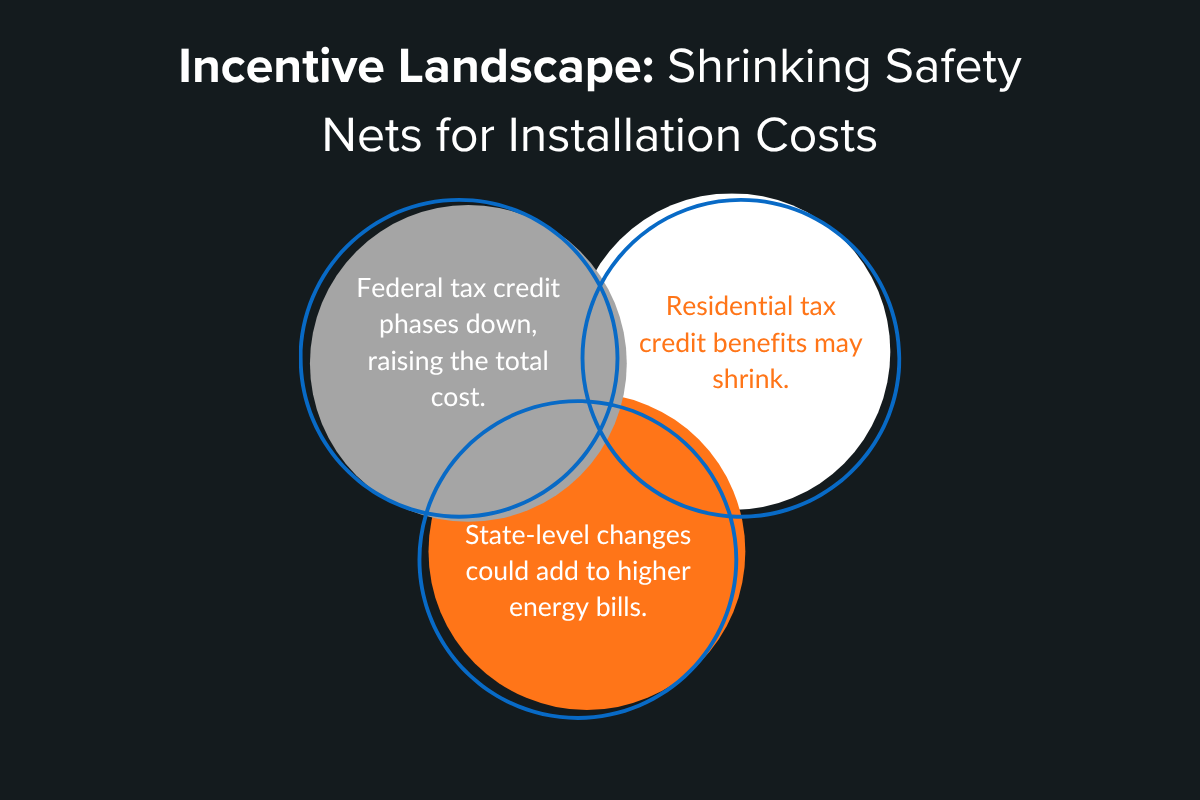
For years, federal incentives and tax credits created a strong safety net for anyone installing solar panels. But that cushion is fading. The Residential Clean Energy Credit (Section 25D) must be claimed for systems placed in service by December 31, 2025, to receive the full 30% (Greenlancer).
After that date, standard installations may no longer qualify—or may qualify under reduced or different terms—making solar projects comparatively more expensive unless other incentives apply.
A $25,000 solar panel system that once cost just $17,500 after the investment tax credit could soon feel 30–40% pricier.
On top of this, several states are scaling back net metering and other tax incentives, directly impacting expected solar savings and extending the payback period.
Why it matters:
- Federal tax credit phases down, raising the total cost.
- Residential tax credit benefits may shrink.
- State-level changes could add to higher energy bills.
For solar companies and homeowners alike, the urgency to act now is real; waiting could mean higher financing costs and fewer financial benefits.
Consumer Sentiment & Adoption Behavior Of Solar Panels
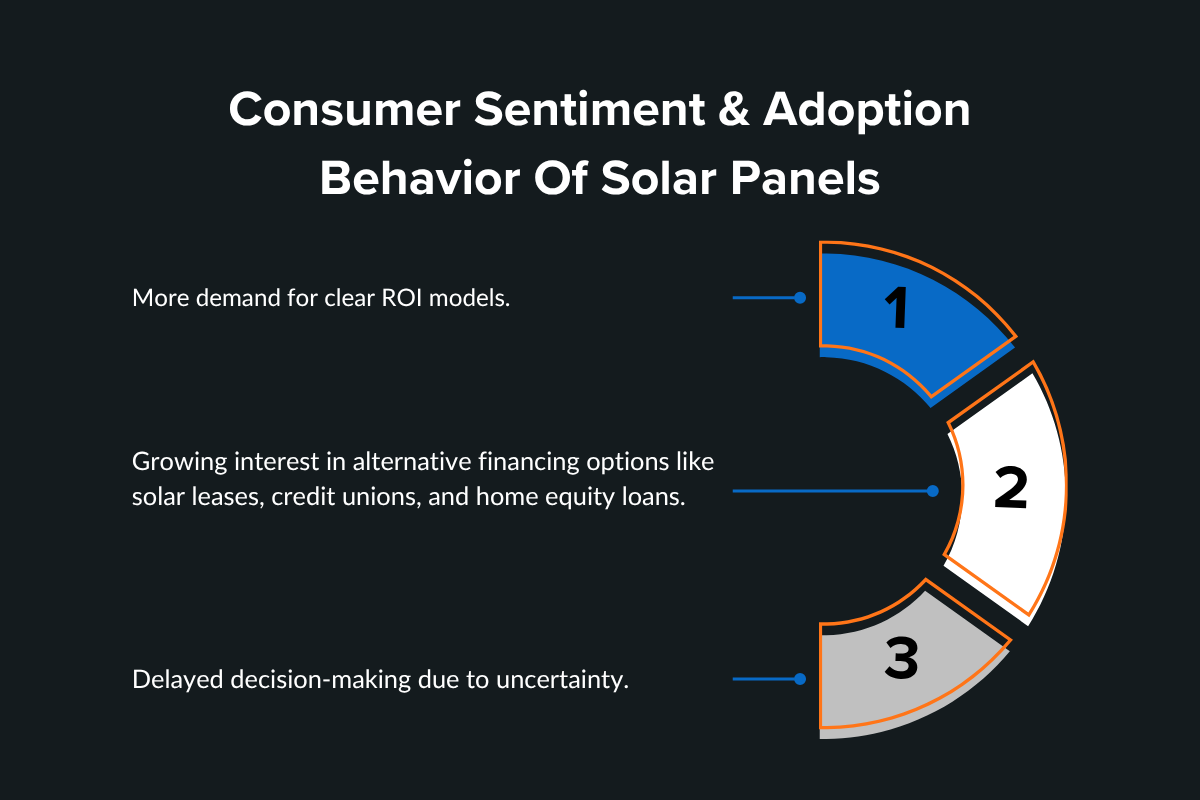
Here’s the shift: higher solar loan rates and reduced tax incentives are changing not just numbers but decisions. Many homeowners who once viewed a home solar system as a smart investment now hesitate.
Some are delaying solar panel installation altogether, waiting for interest rates to drop or new federal incentives to appear.
On the business side, firms are analyzing ROI with sharper pencils, demanding clarity on loan terms, monthly payments, and expected energy savings before they sign off. This means solar companies can’t rely solely on the “green” narrative anymore.
The real driver is financial transparency, how a solar loan, cash purchase, or power purchase agreement impacts total loan cost and monthly loan payments.
Key consumer shifts:
- More demand for clear ROI models.
- There is a growing interest in alternative financing options like solar leases, credit unions, and home equity loans.
- Delayed decision-making due to uncertainty.
Education and trust are now as valuable as solar energy itself.
Project Pricing & the Role of CRM Quoting for Solar Panel Installation
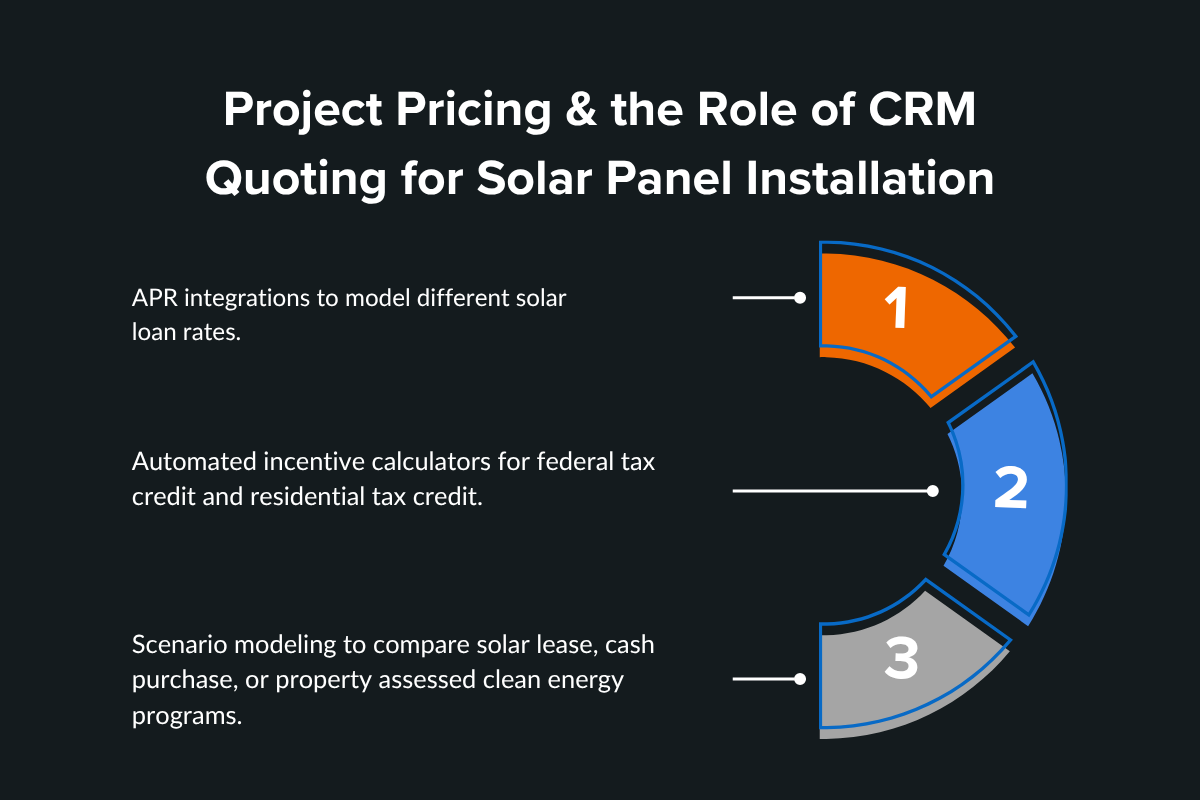
In today’s environment, pricing a solar energy system isn’t just about crunching numbers; it’s about storytelling.
Modern CRM quoting tools like Sunbase help solar installers show how solar financing costs, dealer fees, and tax incentives impact the net cost in real time.
Customers can instantly see how a loan amount, down payment, or federal tax credit affects their monthly loan payments. This visibility builds confidence in both the solar system and the solar companies offering it.
The most effective tools include:
- APR integrations to model different solar loan rates.
- Automated incentive calculators for federal tax credit and residential tax credit.
- Scenario modeling to compare solar lease, cash purchase, or property-assessed clean energy programs.
Pair that with mobile-friendly proposals, e-signatures, and transparent breakdowns, and even hesitant customers feel empowered. In 2025, trust, built through clarity, is what drives conversions in the solar market.
Understand The Future of Solar Proposal Software: What’s Changing in 2025?
Solar Financing Costs in 2025
In 2025, the cost of going solar depends less on the panels themselves and more on how the project is financed.
A typical residential solar energy system runs between $18,000 and $38,000 after the federal tax credit.
For commercial solar installations, costs often land between $65,000 and $210,000, depending on system size, roof conditions, and equipment manufacturer.
The challenge? As the 30% investment tax credit phases down after December 2025, those same projects could feel 30–40% more expensive by 2026. That means higher monthly payments, tougher loan terms, and a longer payback period.
Today, many homeowners look at the loan process more closely, questioning:
- What’s the solar loan rate?
- How high are the dealer fees or financing fees?
- Is there flexibility in the down payment or the loan balance?
For many, the upfront price of solar panels isn’t the issue; it’s whether the financing options make the math work.
Regulatory & Policy Uncertainty Regarding Energy Costs
If interest rates are the visible challenge, policy is the invisible one. Changes to net metering programs, eligibility for residential tax credits, or even adjustments to property-assessed clean energy (PACE) rules can shake customer confidence overnight.
For instance, California’s NEM 3.0 cut compensation rates by 75%, drastically extending the payback period for homeowners (EnergySage). Similar revisions in other states could reshape the entire solar market.
Customers sense this volatility, which is why many delay solar panel installation until they feel the rules are stable.
Businesses are especially cautious, running more detailed ROI models to factor in potential shifts in tax liability or reduced federal incentives.
For solar companies and solar lenders, speed and adaptability matter. Updating solar financing proposals in real time, modeling alternative financing costs, and showing clear financial benefits is not optional; it’s the new baseline for winning trust and closing deals.
Check out the Tools for Solar Business Resilience.
Key Challenges & CRM-Driven Solutions for Solar Energy
The headwinds in 2025 go beyond higher solar loan payments. Rising interest rates, disappearing tax credits, and unpredictable policy shifts all combine to make the solar financing landscape more complex. But CRM quoting tools like Sunbase help bridge the gap.
Here’s a closer look:
| Challenge | Impact on Solar Projects | CRM/Tech Solution (Sunbase) |
|---|---|---|
| Rising interest rates | Higher solar loan rates increase monthly loan payments, lowering ROI and slowing adoption. | Built-in loan calculators with APR modeling for precise projections. |
| Incentive phase-outs | The end of the investment tax credit and reduced federal incentives raise the net system cost by 30–40%. | Automated incentive calculators update quotes instantly. |
| Dealer fees & tight credit | Third-party lenders and high dealer fees (10–30%) reduce affordable financing options. | Transparent quoting with real-time financing fees. |
| Policy uncertainty | Customers postpone solar installation due to unstable ROI and shifting tax incentives. | Quick mobile proposals, scenario modeling, and e-signatures. |
| High upfront costs | Larger down payments and higher total loan costs discourage adoption. | Flexible loan process with multiple financing options. |
By giving customers transparency on solar savings, loan terms, and monthly payments, CRMs help convert hesitation into confidence.
Future Outlook of Energy Consumption: Beyond 2025
Looking ahead, shrinking tax incentives and the expiration of the federal tax credit will reshape the solar market, but new financing options offer hope.
Tools like green bonds, power purchase agreements (PPAs), and third-party lenders can offset rising solar financing costs and help homeowners manage monthly payments.
The real winners will be solar companies that go beyond selling solar panels by building trust, simplifying the loan process, and showing clear financial benefits of a solar energy system as a truly smart investment.
Sunbase as a Market Leader

Sunbase is empowering over 6,000+ solar professionals worldwide with tools designed to address today’s toughest challenges in solar financing costs, customer trust, and project efficiency. Rather than just calculating numbers, it enables companies to deliver clarity and confidence in every proposal.
Key ways Sunbase helps solar companies succeed:
- All-in-One Platform: Combines CRM, solar design, project management, and proposal software into a single streamlined system.
- Smarter Proposals: Real-time pricing, financing options, incentive modeling, and e-signatures make closing deals faster and more transparent.
- Financial Accuracy: Loan calculators with APRs, dealer fees, and automated incentive updates ensure customers see true net costs.
- Efficiency Gains: Companies report proposal creation up to 72% faster and 33% higher conversion rates through automation.
- CRM: Manage customer interactions effortlessly, track leads through every stage, and automate daily workflows to keep your sales pipeline active and organized.
- Solar Design: Create accurate, high-precision solar system layouts using advanced tools that calculate energy output, shading, and cost efficiency in real time.
- Scheduling: Automate appointment bookings, crew assignments, and installation timelines — reducing downtime and improving coordination across teams.
- Solar Sales: Monitor sales activities with real-time insights. Track conversions, analyze team performance, and make data-driven decisions to boost revenue.
- Solar Finance: Streamline invoicing, payment tracking, and financing workflows in one place. Keep your budgets balanced and your clients informed.
- Solar Reporting: Get real-time analytics with customizable dashboards that highlight your company’s performance, project health, and ROI — all in one view.
- Solar Operations: Simplify project execution from start to finish. Track progress, assign responsibilities, and ensure every installation stays on schedule.
In a market facing rising interest rates and reduced tax incentives, Sunbase stands out as a trusted partner helping solar companies build stronger customer relationships while driving growth.
Wrapping It Up
Solar financing costs in 2025 are reshaping the way homeowners, businesses, and solar companies approach clean energy investments.
With higher interest rates, shrinking tax incentives, and policy uncertainty, the real challenge isn’t solar panels;
It’s how projects are financed.
Success now depends on clarity, transparency, and trust. Companies that simplify the loan process, highlight financial benefits, and offer smarter financing options will thrive, turning solar energy systems into not just an upgrade, but a confident, smart investment.
About Sunbase
Sunbase empowers solar companies with smarter financing tools, seamless proposal management, and customer-ready clarity. Schedule a demo today and see how Sunbase can transform your solar sales journey.
FAQs
1. How much does a solar loan cost?
Typical solar loan APRs range from 3.99% to 17%, depending on lender, credit score, and fees. Many options include combo loans with lower effective system costs via incentives.
2. Is it worth getting a loan for solar?
Yes, especially when monthly payments align with or beat energy bills, and long-term savings plus tax credits often offset the higher solar financing costs.
3. What is a finance charge on a solar loan?
A finance charge is the interest (plus any dealer or processing fees) paid over the loan term, impacting the total loan cost and monthly payments.
4. How much does solar cost for a 2,000 sq ft house?
In the U.S., average solar system costs range from $29,200 before incentives to around $20,500 after the 30% federal tax credit.
I agree to receive marketing messaging from Sunbase at the phone number provided above. I understand data rates will apply, and can reply STOP to OPT OUT.

